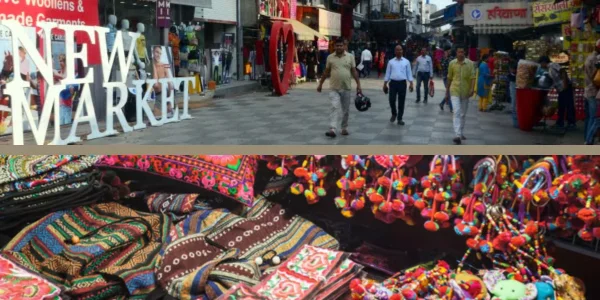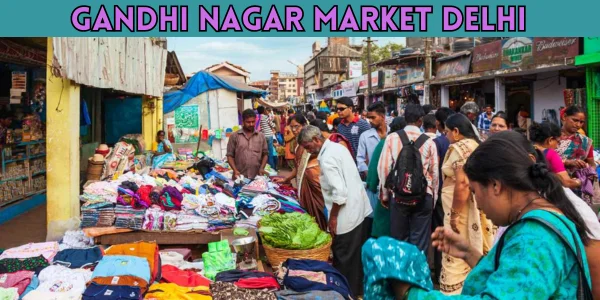Mizoram, known as the “Land of the Highlanders,” is a state rich in vibrant traditions, unique customs, and artistic heritage. Dance plays a vital role in Mizo society, as it is an expression of community bonding, joy, and storytelling. The traditional dances of Mizoram are performed during festivals, social gatherings, and important life events, keeping the Mizo identity and culture alive.
These dance forms have been influenced by tribal lifestyles, folklore, and agricultural practices, making them distinct and deeply rooted in Mizo traditions. Let’s explore the most famous traditional dance forms of Mizoram, their significance, and the occasions they are performed.
1. Cheraw – The Famous Bamboo Dance of Mizoram
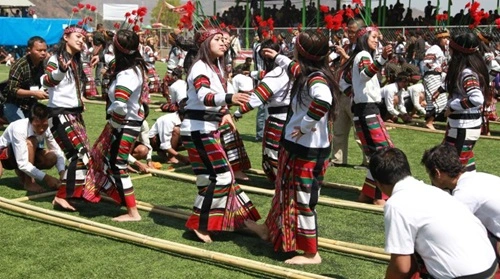
One of the most popular and iconic dances of Mizoram, Cheraw is also known as the “Bamboo Dance”. It is a graceful and rhythmic dance performed by both men and women, using bamboo sticks as part of the performance.
- Features: Dancers step between moving bamboo poles, synchronizing their movements to avoid getting caught.
- Themes: Agricultural life, nature, and community unity.
- Occasions: Chapchar Kut (Spring Festival), weddings, and special celebrations.
Cheraw dance requires great skill and coordination, as the dancers move in perfect harmony with the beat of bamboo claps. The colorful costumes and rhythmic steps make it a mesmerizing visual spectacle, gaining recognition even on international platforms.
2. Khuallam – The Dance of Welcome
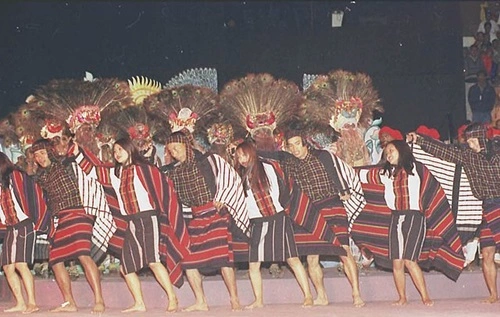
Khuallam is a traditional dance of the Mizo people, performed as a welcome dance during social and cultural gatherings. It was originally performed to honor guests and warriors returning from successful battles.
- Features: Energetic steps, synchronized movements, and warrior-like pride.
- Themes: Hospitality, victory, and celebration.
- Occasions: Community festivals and cultural events.
The dancers wear traditional handwoven puan (Mizo shawls) and move in quick, rhythmic steps to the beats of traditional drums and gongs.
3. Chheih Lam – The Dance of Celebration
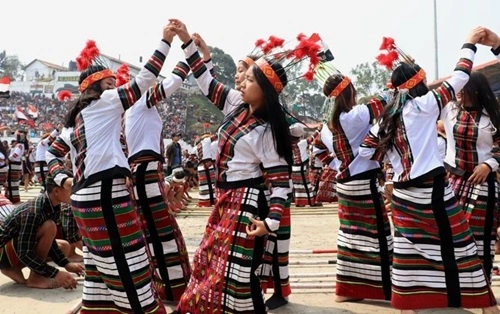
Chheih Lam is a social dance performed in a circle, with men and women dancing together while clapping and singing along with folk music. It is one of the most joyful and interactive dances of Mizoram.
- Features: Simple rhythmic steps, clapping, and storytelling through dance.
- Themes: Happiness, social bonding, and community togetherness.
- Occasions: Harvest festivals, social gatherings, and celebrations.
This dance form brings people together, creating a sense of unity and joy among the participants.
4. Tlanglam – The Festive Dance of Mizoram
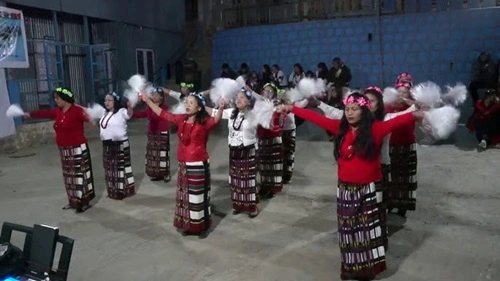
Tlanglam is a popular Mizo folk dance, performed during festivals and joyous occasions. It is a high-energy dance, requiring quick footwork and synchronized movements.
- Features: Fast-paced steps, group formations, and rhythmic beats.
- Themes: Festivity, social unity, and joy.
- Occasions: Mizo festivals, weddings, and state celebrations.
Tlanglam is often performed with traditional drum beats and Mizo folk music, making it one of the most energetic and entertaining dance forms.
5. Solakia – The Warrior Dance
Solakia is a martial dance of Mizoram, inspired by warrior traditions and battle movements. It is performed by men, showcasing strength, agility, and bravery.
- Features: Sword-like movements, acrobatics, and aggressive steps.
- Themes: Heroism, war victories, and warrior pride.
- Occasions: Festivals, warrior celebrations, and tribal ceremonies.
This dance form is a tribute to the warrior spirit of the Mizo people, preserving their rich martial traditions.
6. Sarlamkai – The Dance of Victory
Sarlamkai, also known as Solakia in some regions, is a victory dance performed after tribal wars. It was once a ritualistic dance of the Mizo warriors, celebrating their triumph in battles.
- Features: War-like formations, strong rhythmic beats, and dramatic expressions.
- Themes: Victory, warrior pride, and tribal unity.
- Occasions: Festivals and historical celebrations.
Although no longer a war dance, Sarlamkai is performed as a cultural tribute to the past warrior traditions of Mizoram.
7. Par Lam – The Dance of the Hills
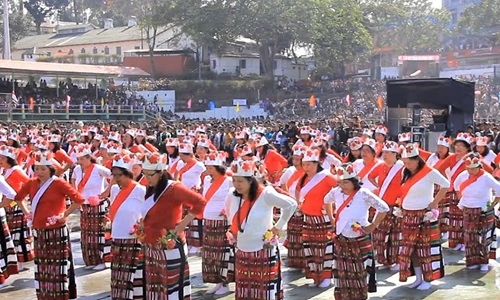
Par Lam is a lively and rhythmic dance, performed to celebrate nature and community life. It is inspired by the hills and forests of Mizoram, showcasing traditional Mizo folk music and drumming.
- Features: Joyful movements, circular formations, and hand gestures resembling birds and nature.
- Themes: Nature, happiness, and unity.
- Occasions: Harvest festivals, social events, and community dances.
This dance highlights the strong connection between the Mizo people and their natural surroundings.
8. Rallu Lam – The Dance of War and Hunting
Rallu Lam is a traditional Mizo dance that narrates stories of war and hunting expeditions. It is performed by men, reflecting their bravery and survival skills.
- Features: Fast movements, warrior formations, and hunting gestures.
- Themes: Hunting, tribal life, and victory.
- Occasions: Warrior celebrations and historical events.
Rallu Lam serves as a reminder of Mizoram’s tribal past, where men engaged in hunting and warfare for survival.
Conclusion
The traditional dances of Mizoram are a reflection of its rich cultural heritage, tribal traditions, and strong community spirit. Each dance form carries a unique identity, from the graceful bamboo dance (Cheraw) to the powerful warrior dances (Solakia and Rallu Lam).
These dances are not just performances but living traditions that connect the Mizo people to their history, folklore, and social customs. They continue to be preserved and celebrated through festivals, cultural events, and performances, ensuring that the vibrant heritage of Mizoram remains alive for future generations.
With their graceful movements, synchronized rhythms, and storytelling elements, the traditional dances of Mizoram remain a source of pride and joy, showcasing the state’s cultural brilliance to the world.
